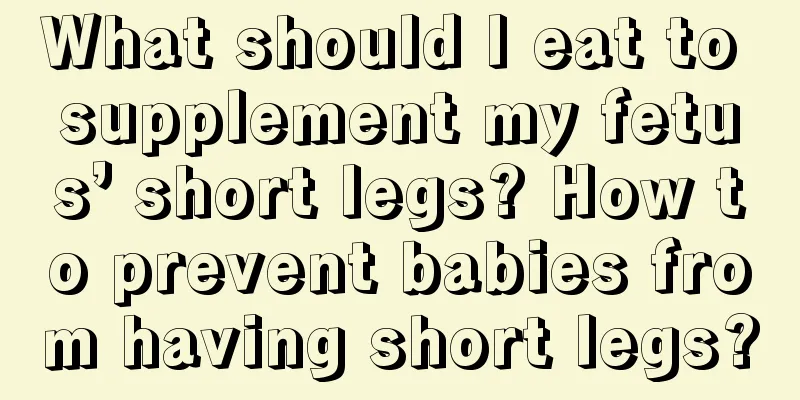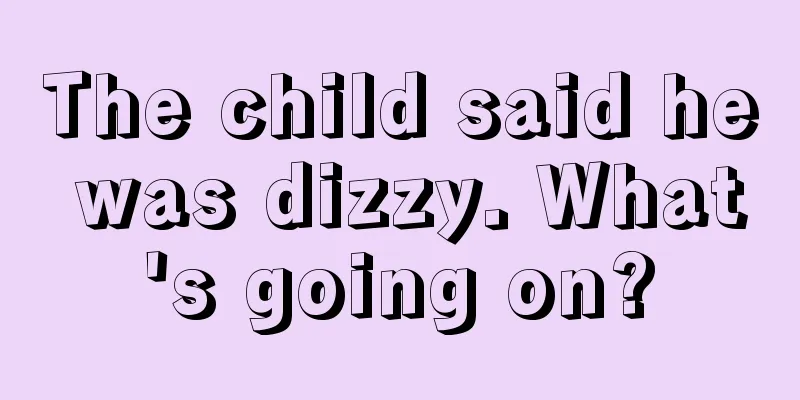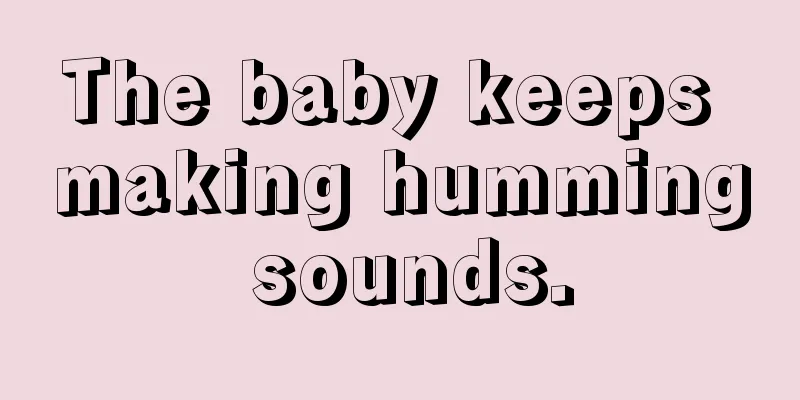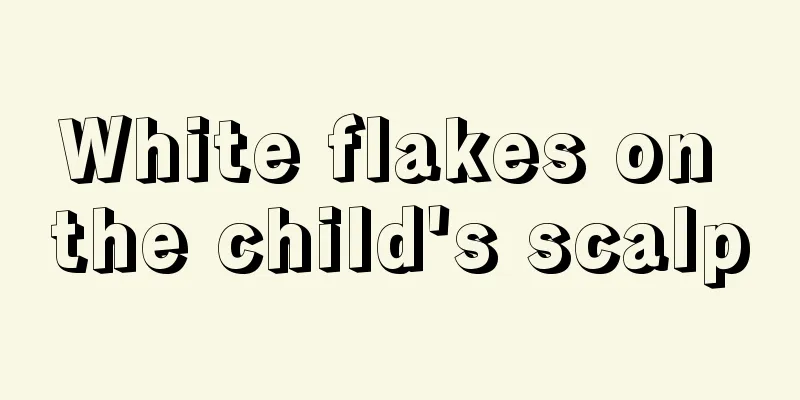Why do children have cold hands and feet when they have a fever?
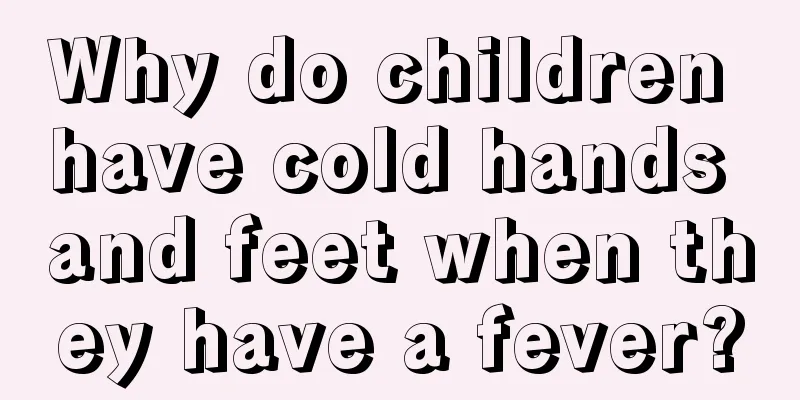
|
It is a common phenomenon that young children have cold hands and feet when they have a fever. Many mothers do not understand this phenomenon and think that their children are really cold, so they start to cover their children with quilts or add clothes. But is this really the case? Is it okay to do so? Why do children have cold hands and feet while having a fever? Now let us understand the reasons for young children's fever and cold hands and feet! 1. Symptoms of fever in hands and feet Having a fever but cold hands and feet is a phenomenon of false cold and true heat, which is especially common in infants and young children under 3 years old. This is mainly because babies (especially infants) have less blood in their limbs than in their internal organs. Due to insufficient blood supply to their limbs, they are more likely to feel cold than adults. In addition, the baby's nervous system is not yet fully developed, and the autonomic nerves responsible for managing vasodilation and contraction are prone to disorder, causing the small blood vessels at the ends of the limbs to be in a spasmodic contraction state and become cold when the high fever first occurs. Many parents do not understand this situation. Once they find their baby's limbs are cold, they mistakenly think that the baby has caught a cold and is afraid of the cold, so they immediately wrap the baby tightly. As a result, the baby's body temperature cannot be dissipated in time and keeps rising, and even high fever and convulsions occur. 2. Don’t take medicine blindly If the body temperature exceeds 38.5 degrees, do not reduce the fever too quickly when the child has a fever. Many parents are eager to reduce their children's fever because they are worried that the fever will damage their children's brains and affect their intelligence. In fact, a simple fever will not affect the intellectual development of children. If the baby has other discomforts, it is recommended to see a doctor to see if there is any inflammation or something, and it would be better to prescribe some medicine for the baby to take. 3. Causes of fever in babies Body temperature is affected by the external environment, such as wearing too many clothes when it is hot, drinking too little water, and poor ventilation in the room. Also sickness, colds, tracheitis, sore throat or other illnesses. In addition, preventive injections including measles, cholera, diphtheria, pertussis, tetanus, etc. can also cause colds and fevers. 4. How to deal with it If the child's body temperature does not exceed 38.5 degrees, antipyretic drugs are generally not needed, but changes in body temperature should be closely monitored. If the child's body temperature reaches 39 degrees, in order to prevent heat cramps, under the guidance of a doctor, choose appropriate antipyretics, or use physical cooling, such as using 75% alcohol or warm water to wipe the armpits, groin, palms, soles of the feet and other areas with rich blood flow, which can also help reduce fever, and the effect is very good, and children are willing to accept it. But you must be careful to keep the child covered at all times while wiping to prevent him from catching cold. When a child has a fever, he or she should take off clothes and should not try to cover up the sweat to lower the body temperature, because excessive sweat loss will make the child feel tired and weak. Traditional Chinese medicine believes that the loss of a large amount of body fluid is actually beneficial to the child's recovery. 5. Notes Keep the indoor air fresh, open windows for ventilation regularly, and do not allow the room temperature to be too high, preferably between 18 and 20 OC. At the same time, do not let drafts blow directly on the child. If the child's fever still does not subside, cooperate with the doctor and do other examinations to find out the cause of the disease as soon as possible and facilitate targeted symptomatic treatment. The diet should be light, easy to digest and absorb, and semi-liquid, such as nutritious porridge and egg noodle soup: eat more vegetables and fruits, especially fresh fruits and vegetables containing vitamin C, drink plenty of water, and eat liquid food, such as watermelon juice, to ensure that the body has enough energy and water. Only by figuring out the reasons why a child has a fever and cold hands and feet can we know how to alleviate this symptom. It is recommended that mothers learn more about medical knowledge when they are free, so as not to be panicked when the baby has an emergency, or due to ignorance, improper care for the baby leads to other consequences, seriously affecting the baby's health and growth. |
<<: Is enema good for treating fever in children?
>>: How to treat a five-year-old child with a fever
Recommend
Two-year-old children with autism
Autism is a common disease, and the incidence rat...
What are the symptoms of chronic pharyngitis in children
The child's diet is irregular. He eats a lot ...
What is the reason for the red bumps on children's bodies?
Children's health has always been a matter of...
What is the normal lung capacity of a child?
The health of every child is the most worrying is...
Why is the newborn baby breathing rapidly?
From the moment a newborn is born, he or she begi...
How to do BCG skin test
Newborn babies have very poor resistance and are ...
What are the red spots on the baby's head?
When babies are very young, they may have red spo...
Is it normal to feel nauseous at 30 days of pregnancy?
We all know that there will be no obvious symptom...
Why does a newborn baby not urinate?
Why do newborns not urinate? It is abnormal for n...
What should children eat if they are iron and calcium deficient?
In life, calcium and iron are essential trace ele...
Why is the 8-year-old girl's underwear yellow?
If an eight-year-old girl's underwear is slig...
What should I pay attention to when changing milk powder for newborns?
When changing the milk powder for a newborn, ther...
What food should I eat to remedy a child’s slow growth?
Parents are the most anxious when their children ...
Can children drink pregnant women's milk powder?
During pregnancy, many pregnant women drink milk ...
How to improve children's physical fitness most effectively
Children are the treasures of their parents, and ...
